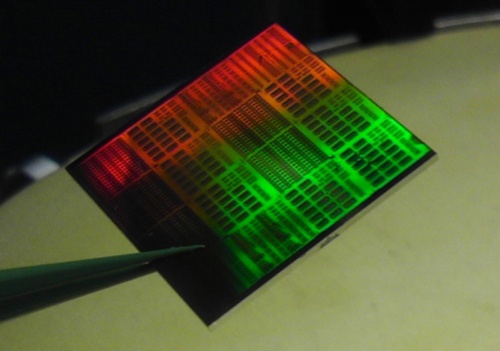IBM improves graphene transistors

Or rather, not so much the transistors themselves, as CMOS process technology for the manufacture of "graphene" transistors. The company has been studying graphene for a long time, its properties, as well as possible ways to use the material.
One of these ways is the complete or partial replacement of graphene silicon in high-power / high-frequency transistors.
')
In general, all this is not new, since IBM presented a mock-up of a frequency mixer using a “graphene” transistor in the scheme three years ago. True, then this layout was an early prototype, and its dimensions were quite large. Since then, work has been done to improve the silicon wafer processing process, with the goal of including the process of forming transistors with channels from graphene as one of the stages of the CMOS process.

The main problem faced by scientists is the damage to graphene during the creation of channels from this material. Of course, due to damage, the characteristics of the transistors with channels from graphene deteriorated.
At the end of January, it was announced that the company's specialists had developed a new CMOS process technology, while maintaining the properties of graphene channels.
In the course of the research, the specialists managed to create a working prototype of the radio-frequency path, with an amplifier, frequency mixer, filter and other elements. The size of the crystal is only 0.6 sq. Mm on a 200-mm plate. The circuit used four inductors, two capacitors, three transistors and two resistors. Each of the field-effect transistors used in the circuit had a channel from graphene.

The conductivity of the new circuit has been improved 10,000 times compared to previous prototypes. As an experiment, text information was transmitted at a frequency of 4.3 GHz, with the name of the company encrypted in the message.
It should be noted that the power consumption of electronic circuits using graphene is much lower than the power consumption of pure silicon analogues, while the data transfer rate is higher. For example, the “graphene scheme” for wireless transceivers, created by IBM, consumes about 20 mW of power in the operating mode.
Source: https://habr.com/ru/post/211570/
All Articles